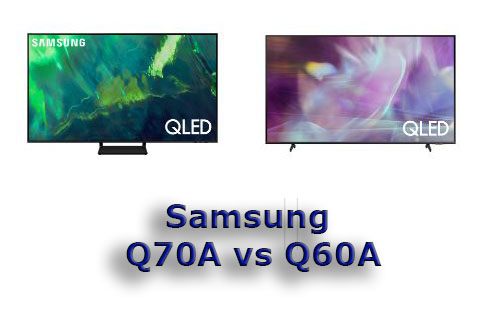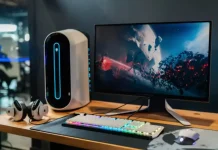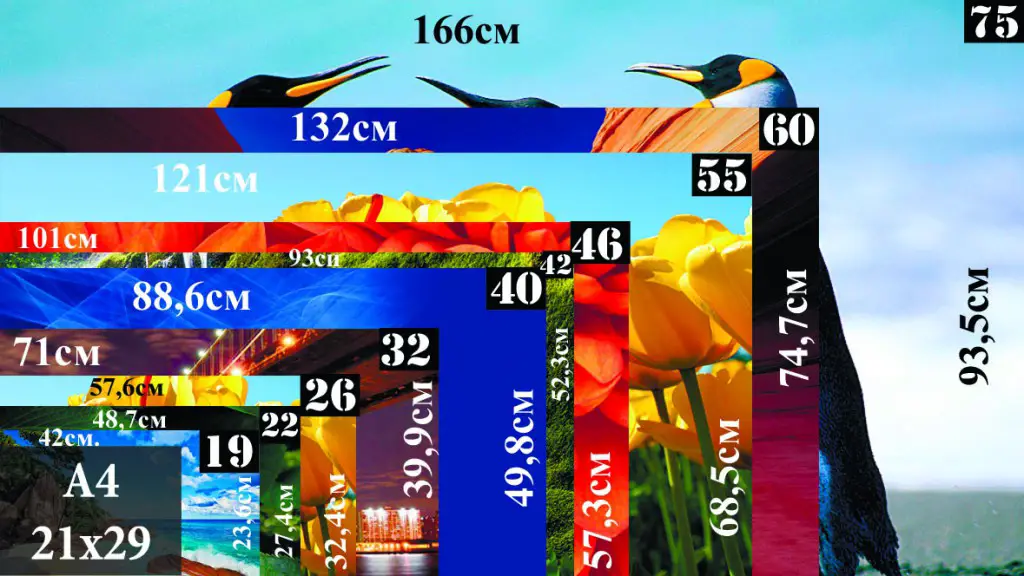Se avete deciso di acquistare un televisore di una nuova linea di QLED e volete comprare un televisore più economico, presterete sicuramente attenzione al modello Q60A. Questa TV è posizionata come una TV QLED della sesta serie. Ma in questo articolo vi parleremo delle differenze cardinali tra il Q60A e gli altri TV QLED della serie 2021. Alla fine dell’articolo potete vedere le specifiche complete e confrontare Q70A con Q60A.
Le differenze tra Q60A e Q70A sono spiegate
I TV della serie Q60A sono abbastanza inferiori ai TV della serie 7 in termini di caratteristiche tecniche. Q60A è uno schermo più economico, il processore e naturalmente il software.
Schermo Q60A, processore
Lo schermo in Q60A è di una classe inferiore, supporta un frame rate massimo di 60 al secondo. Lo schermo è fatto con la tecnologia EDGE, la retroilluminazione dello schermo è posta al lato dello schermo. La grande varietà di dimensioni offerte dello schermo, molto probabilmente indica l’uso di schermi prodotti da altre aziende.
Anche il processore è semplificato, da un lato è giustificato, non ha senso con gli schermi a 60 Hz usare un processore che supporta display a 120 Hz. Per confronto il Q70A è dotato di uno schermo con una frequenza di 120 Hz, il processore nel Q70A è anche più potente.
Altre differenze Q60A
Tra le altre differenze che possono influenzare la valutazione del televisore, possiamo notare le seguenti. Il televisore non è dotato di porte HDMI 2.1, quindi mancano alcune caratteristiche piuttosto utili, soprattutto se si utilizza il televisore come monitor. Il televisore non supporta il floating frame rate, non c’è la funzione FreeSync.
Vale la pena comprare un Q60A o un Q70A
In termini di qualità dell’immagine e caratteristiche di gioco, ovviamente è meglio comprare il Q70A. Ma se non sei molto esigente sulla qualità dell’immagine e non usi la tua TV come monitor, puoi comprare il Q60A. E ti raccomandiamo di andare al negozio e guardare la qualità dell’immagine di questi televisori fianco a fianco. Questo ti darà un’idea reale della qualità dell’immagine dei televisori Q70A e Q60A.
Confronto tra le specifiche tecniche di Samsung Q70A e Q60A
| Q60A (2021) | Q70A (2021) | |
|---|---|---|
| screen | ||
| Screen Size | 43, 50, 55, 60, 65, 70, 75, 85 | 55, 65, 75, 85 |
| Style | Flat Panel | Flat Panel |
| Resolution | 3,840 x 2,160 | 3,840 x 2,160 |
| screen bit | 10bit (8 bit+FRC) | 10bit (8 bit+FRC) |
| type screnn | Quantum Dot | Quantum Dot |
| screen technology | VA | VA |
| Backlighting | EDGE Led (Dual LED) | EDGE Led (Dual LED) |
| Dimming Technology | Supreme UHD Dimming | Supreme UHD Dimming |
| Stand Type (Color) | Titan Gray | BLACK |
| Bezel Width | 3 Bezel-less | 3 Bezel-less |
| Video | ||
| Motion Rate | 120 | 240 |
| refresh rate | 60 | 120 |
| Color | 100% Color Volume with Quantum Dot | 100% Color Volume with Quantum Dot |
| Contrast | Mega Contrast | Mega Contrast |
| HDR (High-Dynamic Range) | Quantum HDR | Quantum HDR |
| Picture Engine | Quantum Processor 4K Lite | Quantum Processor 4K |
| Audio | ||
| Dolby | Yes | Yes |
| Sound Output | 20W | 20W |
| Woofer | No | No |
| Speaker Type | 2CH | 2CH |
| Object Tracking Sound | Yes | Yes |
| Q-Symphony | Yes only soundbar | Yes only soundbar |
| Multiroom Link | Yes | Yes |
| Features | ||
| OS | Tizen 6.0 | Tizen 6.0 |
| Wi-Fi | Yes WiFi 5 | Yes WiFi 5 |
| Bluetooth | Yes (ver.4.2) | Yes (ver.4.2) |
| Smart Hub | ||
| Samsung Health | Yes | Yes |
| Bixby | Yes | Yes |
| Film Mode | Yes | Yes |
| LED Clear Motion | Yes | Yes |
| Natural Mode Support | Yes | Yes |
| Motion Technology | Motion Xcelerator | Motion Xcelerator Turbo+ |
| 360 Video Player | No | Yes |
| 360 Camera Support | No | Yes |
| Easy Setup | Yes | Yes |
| App Casting | Yes | Yes |
| Wireless TV On - Samsung WOW | Yes | Yes |
| Wired TV On - Samsung WOL | Yes | Yes |
| Digital Clean View | Yes | Yes |
| Ultra Black | No | No |
| ConnectShare | Yes | Yes |
| Closed Captioning | No | No |
| Game Mode | No | No |
| Eco Sensor | Yes | Yes |
| Mobile to TV - Mirroring, DLNA | Yes | Yes |
| Google Assistant | Yes | Yes |
| Alexa | Yes | Yes |
| SmartThings App Support | Yes | Yes |
| SmartThings | Yes | Yes |
| Far-Field Voice Interaction | No | Yes |
| TV Plus | Yes | Yes |
| Web Browser | Yes | Yes |
| Gallery | Yes | Yes |
| EPG | Yes | Yes |
| FreeSync | No | Yes FreeSync Premium Pro |
| Filmmaker Mode | Yes | Yes |
| IP Control | Yes | Yes |
| BT HID Support | Yes | Yes |
| MBR Support | Yes | Yes |
| IPv6 Support | Yes | Yes |
| Tap View | Yes | Yes |
| Auto Game Mode (ALLM) | Yes | Yes |
| Wireless Dex | Yes | Yes |
| Cloud Service | Office 365 | Office 365 |
| Multi View | Yes | Yes |
| Game Motion Plus | Yes | Yes |
| Dynamic Black EQ | No | No |
| Super Ultra Wide Game View | Yes | Yes |
| Game bar | Yes | Yes |
| Expert Calibration | No | No |
| Auto Channel Search | Yes | Yes |
| InstaPort S (HDMI Quick Switch) | No | No |
| Channel Guide | No | No |
| Ambient Mode | Yes | Yes |
| Auto Power Off | Yes | Yes |
| AI Technology | ? | ? |
| Auto Motion Plus | Yes | Yes |
| Embedded POP | No | No |
| Anynet+ (HDMI-CEC) | Yes | Yes |
| V-Chip | Yes only US | Yes only US |
| TV to Mobile - Mirroring | No | No |
| USB HID Support | Yes | Yes |
| AI Upscale | Yes | Yes |
| Easy Pairing | No | No |
| Inputs & Outputs | ||
| HDMI | 3 (2.0) | 4 (3 Ver 2.0) 1 (ver 2.1) |
| USB | 2 | 2 |
| Ethernet | Yes | Yes |
| RF In (Terrestrial/Cable | Yes | Yes |
| RF In (Satellite Input) | Yes Europe, No US | Yes Europe, No US |
| Digital Audio Out (Optical) | Yes | Yes |
| Audio Return Channel Support | No | No |
| eARC | Yes | Yes |
| One Connect | No | No |
| Samsung OneRemote | Yes | Yes |
| System | ||
| Digital Broadcasting | ATSC/ClearQAM US, DVB Europe | ATSC/ClearQAM US, DVB Europe |
| Analog Tuner | Yes | Yes |
| Accessories | ||
| Remote control | TM2180E | TM2180E |










